Top 10 Most Expensive Cars Being Sold in Auction
 |
| Top 10 most expensive cars being sold in Monterey Car Week |
The “Super Bowl” of classic-car collecting ended with a roar over the weekend, with auction sales at Monterey and Pebble Beach totaling $345 million, up 35% from 2019.
The top seller of the week, as expected, was a 1995 McLaren F1 sold by Gooding & Co. for $20.5 million, making it the most expensive car to sell at auction since 2018. But the car that was expected to take second place over the weekend, a 1970 Porsche 917 K race-car that was expected to fetch between $16 million and $18.5 million, failed to sell by RM Sotheby’s.
The car, which appeared in the Steve McQueen film “LeMans,” attracted a top bid of $15 million, but failed to meet the buyer’s minimum sale price, or reserve.
The list of top 10 most expensive cars being sold in Monterey Car Week
10. 1963 Shelby Cobra 289 R&P Roadster - $4.1 million, RM Sotheby’s
9. 1958 Ferrari 250 GT Cabriolet SI - $4.4 million, Gooding & Co. (closed headlight)
8. 1928 Mercedes-Benz 26/120/180 S Type Sports Tourer - $5.4 million, Bonhams
7. 1929 Bugatti Type 35B Grand Prix Roadster - $5.6 million, Gooding & Co.
6. 1958 Ferrari 250 GT TdF Coupe - $6 million, RM Sotheby’s
5. 1966 Ferrari 275 GTB Long Nose Alloy Coupe - $7.7 million, RM Sotheby’s
4. 1962 Ferrari 268 SP Spider- $7.7 million, RM Sotheby’s
3. 1962 Aston Martin DB4 GT Zagato Coupe - $9.5 million, RM Sotheby’s
2. 1959 Ferrari 250 California LWB Competizione Spider - $10.8 million, Gooding & Co. (closed headlight)
1. 1995 McLaren F1 Coupe - $20.5 million, Gooding & Co.
10. 1963 Shelby Cobra 289 R&P Roadster
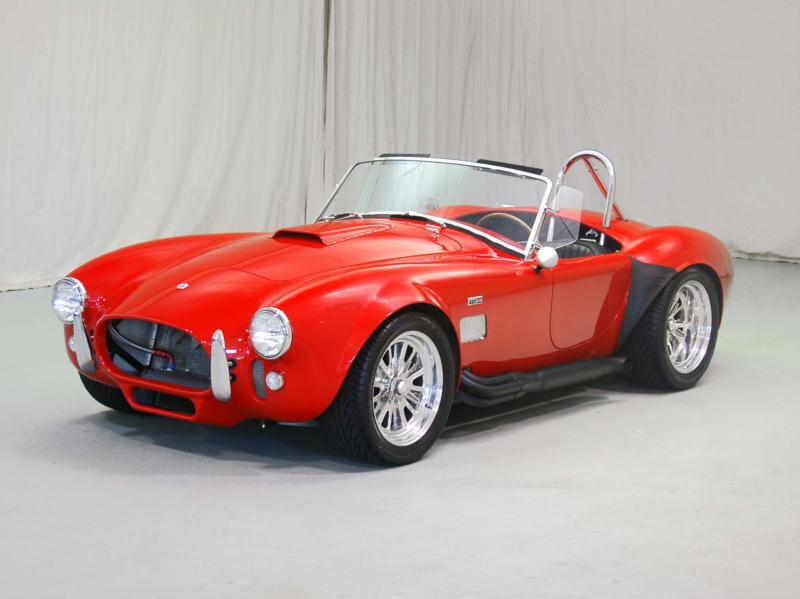 |
| Photo: Hagerty Agents |
By 1961, Carroll Shelby had established his reputation as a racing driver and was just beginning his efforts as a constructor. Impressed by the combined agility and power of borrowed Cad-Allards, he set out to create the ultimate Anglo-American hybrid. AC Cars of Thames Ditton, England provided a nimble tubular frame and aluminum body in their Ace, highly reputed for its dexterity on European circuits. Shelby then persuaded Ford to furnish their new short-stroke 260-cubic-inch engine to complete the perfect union. The Shelby Cobra prototype, CSX 2000, was completed in February 1962 and heavily campaigned across the United States for press events through its unveiling at the New York International Auto Show.
The end of 1962 brought major revisions which rendered the Cobra into its third, and most illustrious form to which the model owes its revered status. Now utilizing rack-and-pinion steering and Ford’s new 289-cubic-inch V-8, the 289 Cobra harnessed the perfect balance of handling and raw power for the lightweight chassis.
Two of these first rack-and-pinion 289 Cobras produced in early 1963 were designated as “Sebring”-specification Works chassis for the Shelby factory racing team (CSX 2128 and 2129). This duo joined a non-rack-and-pinion “Sebring” car, CSX 2127, and immediately proved worthwhile exhibitors for the model’s superior tractability. This early trio of 289 “Sebring” Cobras were at the core of Shelby’s efforts which earned sales and race podiums in equally rapid measure.
Both 289 and 427 Shelby Cobras are the apogee of bare-bone sports racers, and demand is fierce for these cars. They are one of the few blue-chip collectible American cars, with eager buyers residing the world over, so provenance is vital. Luckily, Shelby records are remarkably complete and correct cars will be accurately documented. Enthusiasts debate whether the sheer brute force of the 427 cars is preferable over the 289’s superior livability, but either way there is a Cobra to suit any taste (provided the taste is towards hair-raising motoring in one form or another).
| Replicas flooded the market from the 1970s onwards, and Shelby himself used “leftover” original frames in the 1980s to produce the CSX 4000 series “continuation” cars. These cars provide a cheaper alternative for driver to pursue, though build quality on the non-Shelby cars varies and the replicas tend to have lived full lives, so thorough research is a necessity. |
9. 1958 Ferrari 250 GT Cabriolet SI
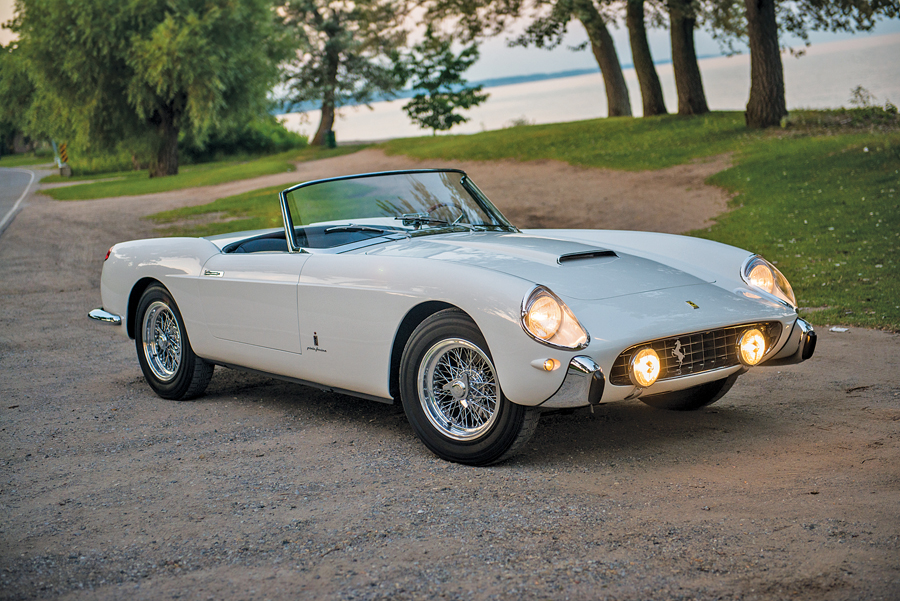 |
| Darin Schnabel ©2017, courtesy of RM Sotheby’s |
The 14th of 40 Series I 250 GT Cabriolets built, chassis 0791 GT was delivered new to its native Italy through Parauto S.r.l of Genova in March 1958. Finished in a very attractive colour combination of Bianco (MM 10019) over Blu (VM 3315) Connolly leather, its colour scheme perfectly suited the car’s personality as a fashionable open-top Ferrari. The car did not remain in Italy for long, and was sold to Luigi Chinetti Motors in New York.
By 1971, the car was sold by Harrison to its third owner, Robert Donner Jr. He was also a noted gentleman racer and a much-admired figure in American sports-car racing circles who owned and raced a number of significant Ferraris, including a 250 GTO. In 1975, Donner rebuilt the engine and refinished the car in red over red and it quickly became his go-to warm-weather driver. A resident of Colorado Springs, Colorado, Donner drove this car in the Colorado Grand no less than a dozen times. As an aside to its warm-weather driver duties, it appeared at The Quail: A Motorsports Gathering in 2007, where it was displayed in a special class of Series I Cabriolets.
Following Donner’s passing, the car was purchased by enthusiasts on the West Coast and received a minor cosmetic restoration, before being sold to its fifth owner who returned it to Europe. At that time it was returned to its as-delivered specification of Bianco over Blu, and fitted with a correct type 128 C engine, sourced from Ferrari Classiche.
After being acquired by its current owner, the car was entrusted to RM Auto Restoration of Blenheim, Ontario, for further sorting in an effort to bring the car to show-ready condition for display at concours events, where it certainly would be most welcome. Today, the car presents in excellent condition throughout, thanks to not only its recent detailing, but also to its gentlemanly colours, seldom seen on a Ferrari of this type.
8. 1928 Mercedes-Benz 26/120/180 S Type Sports Tourer
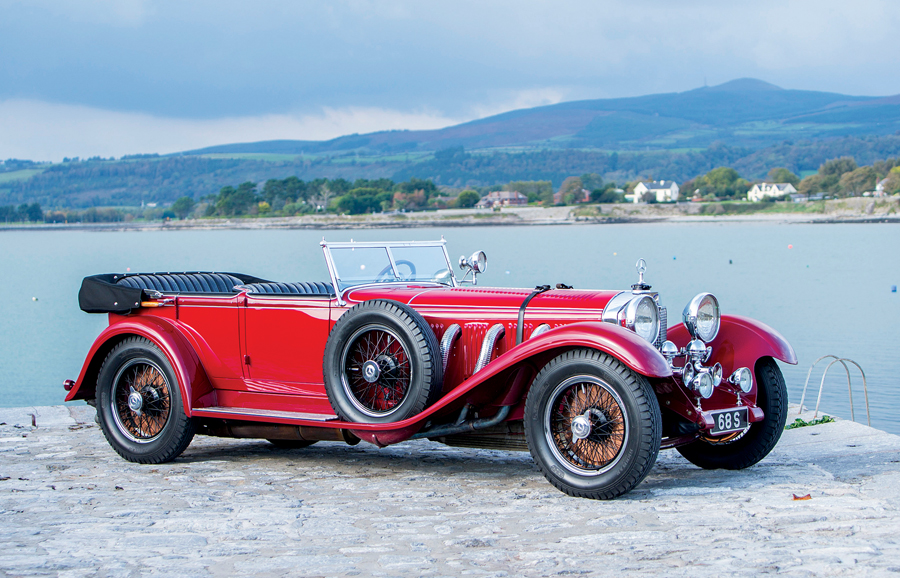 |
| Photo: Sports Car Market |
"Silent streams of super-power... unbounded flexibility" "comfort to carry you to the ends of the earth" - quoted period Mercedes-Benz advertising in America for the legendary Typ S.
The 'S' was created in a magical period for the company, shortly after the merger of Daimler and Benz, while Ferdinand Porsche was Chief Engineer. He built a powerful, yet versatile automobile - a true all rounder, at home on the race track, at hill climbs and providing exhilarating driving for the road. The signature engineering feature was its 'on demand' Roots type supercharger, that only came into operation when the accelerator was fully depressed, boosting power output from 120 to 180 brake horsepower for a few glorious seconds!
This stunning 'S' has spent the lion's share of its lifetime in the present ownership, being acquired by the current owners' father some 57 years ago in 1964. It epitomizes the presence, stance, and sheer elegance of the model and over the course of its current custody, has been at home in all aspects of the hobby, from the show field to fast road tours. The car's provenance is supported by a fabulous treasure trove of materials charting its history and maintenance throughout this period. With letterheads from many of the luminaries in the hobby, the assemblage of documents makes for fascinating reading.
7. 1929 Bugatti Type 35B Grand Prix Roadster
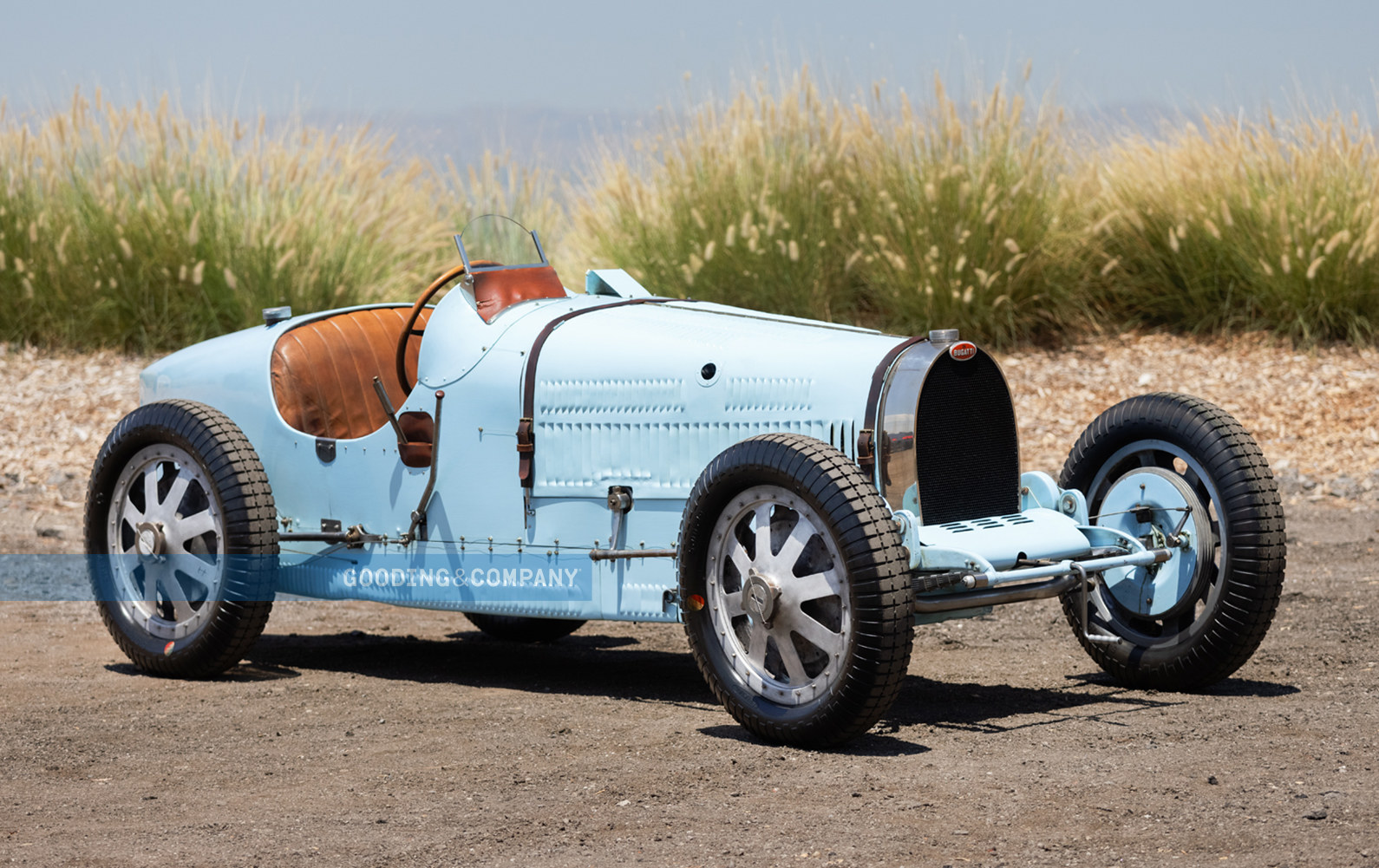 |
| Photo: Gooding & Company |
Considered by many to be the finest racing car of its period and one of the most enduring automotive designs of all time, the Type 35 Grand Prix is the definitive Bugatti.
Unveiled at the 1924 Grand Prix of Lyon, Ettore Bugatti’s Type 35 was immediately hailed as a modern marvel, combining advanced engineering with masterful aesthetic design. Equipped with an overhead-cam eight- cylinder engine, the original Type 35 produced 95 hp, an impressive figure for a normally aspirated two-liter machine of the era. The car’s extremely lightweight chassis showcased Bugatti’s revolutionary hollow front axle and cast aluminum wheels with integrated brake drums, while the main mechanical components were clothed in a streamlined two-seat aluminum body that was both elegant and purposeful. The entire car was beautifully made, from its horseshoe radiator to its tapered tail, with scraped or polished metal finishes and fine detailing throughout.
Bugatti built several different variations of the Type 35 through 1931, when the model was replaced by the Miller-inspired twin-cam Type 51. Early Type 35s generally followed the pattern set by the original Lyon cars, while more powerful supercharged models of varying engine capacity appeared in 1926. Altogether, the Bugatti works in Molsheim, France produced approximately 350 Type 35s.
6. 1958 Ferrari 250 GT TdF Coupe
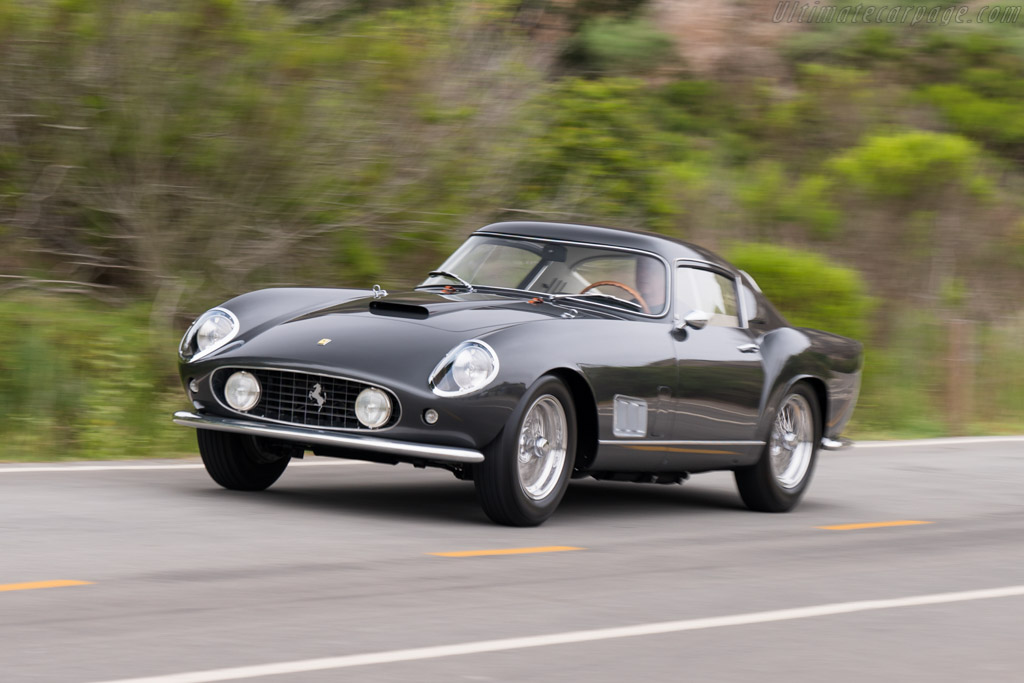 |
| Photo: Gooding & Co. |
The GT moniker was first introduced to the Ferrari line-up in 1954 with the introduction of the 250 GT Europa. It replaced the 250 Europa and was primarily intended as a road car, but as it turned out it formed the basis for a long line of highly successful racers. Unlike its Lampredi big-block powered predecessor, the 250 GT Europa used Colombo's short block V12, derived from the 250 MM racing engine. The Pinin Farina designed and constructed coupe body was also similar to the 250 MM's. The chassis followed Ferrari's familiar pattern of two large tubular members with several cross braces with a wheelbase of 2600 mm. Suspension was by wishbones at the front with a single transverse leaf spring and a live axle at the rear. In good Italian fashion, large finned drum brakes took care of the braking.
With its 2953 cc V12 engine, the 250 GT Europa fitted perfectly in the new three litre class, so it was no surprise a 'Competizione' version was prepared for the 1955 season. The first competition 250 GTs were very similar to the road cars, but of course stripped of all luxuries. After the first batch of four cars was constructed, the chassis was modified with the front transverse leaf springs replaced by coil springs. Breathing through three Webers, the three litre engine produced between 230 and 260 bhp depending on the version and the state of tune. Pinin Farina bodied the first cars, but shortly after the production was allocated to the local specialist Scaglietti, while the Turin based coach-builder continued to supply the designs. With the exception of five chassis, bodied by Zagato, all subsequent 250 GT competition cars featured Scaglietti built bodies
| Internally all 250 GTs built between 1955 and 1964 were known as such, but several nicknames were used to distinguish the various types. The cars built between 1955 and 1959 are now referred to as Long Wheelbase (LWB) to distinguish them from the later 2400 mm Short Wheelbase (SWB) cars and those of 1957 through to 1959 vintage are also generally dubbed Tour de France (TdF). This was for a very good reason; from the first time a 250 GT was entered in the gruelling endurance race in 1956, it dominated the event, taking nine consecutive victories. The organizers allowed the (class-)winning manufacturers to use the event's name for the winning model. In 1955 and 1956 the 'standard' competition 250 GTs were constructed with the 250 MM inspired design, but for 1957 the first major modification was carried through.
|
5. 1966 Ferrari 275 GTB Long Nose Alloy Coupe
 |
| Photo: Bonhams |
A perhaps apocryphal story ascribes Enzo Ferrari's motivation in replacing the 250 GT Lusso with the 275 GTB to his belief that the Lusso was too beautiful to convey properly the image of Ferrari.
The 275 GTB has other distinctive attributes, not least its place as the first fully independent suspension transaxle-equipped Ferrari road car, and for the power and tractability of its 3.3-liter 60° V12 engine developed from the 1½ liter Colombo "short block" originally designed in 1947. The engine was mounted low and further back, taking advantage of some of the space created by moving the transmission to a unit with the differential.
Performance, handling and technical advancements aside, it is the coachwork penned by Pininfarina and executed with individuality and attention to detail by Scaglietti that creates the 275 GTB's image: aggressive, svelte and taut with power and potential.
In common with the best designs, the 275 GTB integrates form with function. There is nothing pretentious. Every feature has a functional purpose, from the covered headlights to the Kamm tail and small aerodynamic spoiler.
4. 1962 Ferrari 268 SP Spider
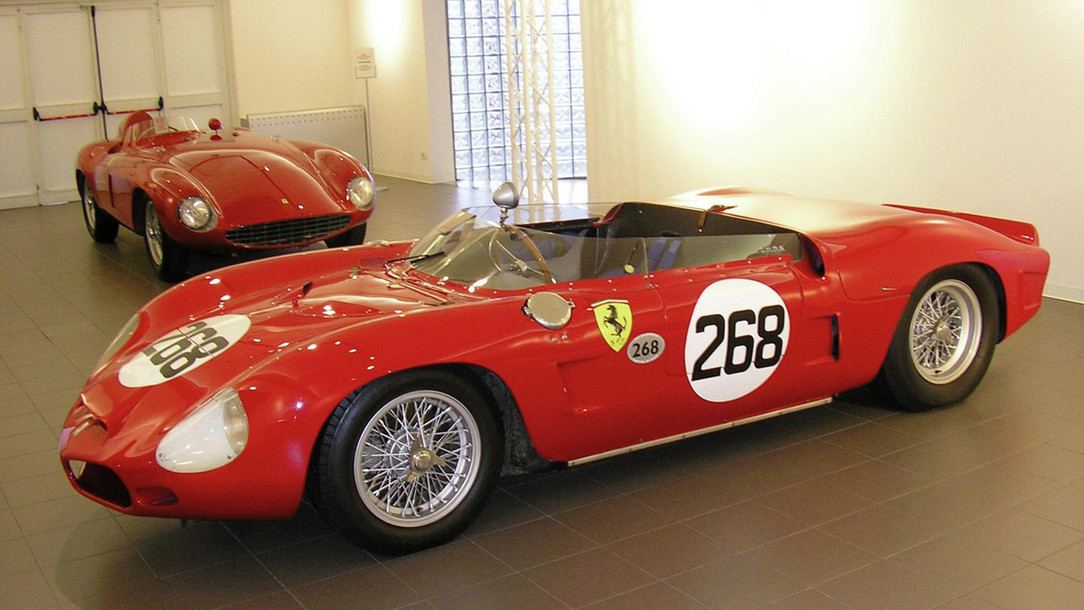 |
| Photo: Ferrari |
This car is the third of six SP examples built, soon followed by chassis numbers 0802, 0804, and 0806. The 1962 cars featured minor bodywork revisions, as the FIA’s windscreen-height regulation had changed. With a cut windscreen, new technical director Mauro Forghieri correspondingly lowered the tail for an even sleeker profile.
In December 1962, the 268 SP was entered by NART at the Bahamas Speed Weeks, and it captured 8th overall and 3rd in class at the Nassau Trophy Race, piloted by the great Bandini. Over the next few months, further bodywork alterations were undertaken, with the twin-nostril grille replaced by a single-vent configuration. The car was then entered at Sebring in March 1963, where it was piloted by John “Buck” Fulp and Team Meister Bräuser ace Harry Heuer to a 34th overall finish, and 8th in class. Bandini assumed driving duties again at the Canadian Grand Prix in September, though the car would retire early.
| This 286 SP claims extreme rarity in the Ferrari lineage as one of just six SP racers originally built and one of only two examples originally equipped with the developmental Maranello eight-cylinder engine. Boasting associations with legendary drivers like Lorenzo Bandini, Harry Heuer, Olivier Gendebien, and Ricardo Rodriguez, chassis 0798 was an integral part of Ferrari’s sports prototype development and racing campaign, and it laid the foundational groundwork for the famed Ferrari P cars. It is also no doubt a cornerstone of the 1964 SCCA D Modified Championship. As such, 0798 has been extensively chronicled and photographed in numerous books and articles, including significant coverage in John Godfrey’s authoritative 1990 volume Ferrari Dino SPs as well as a multi-part feature in Cavallino. |
3. 1962 Aston Martin DB4 GT Zagato Coupe
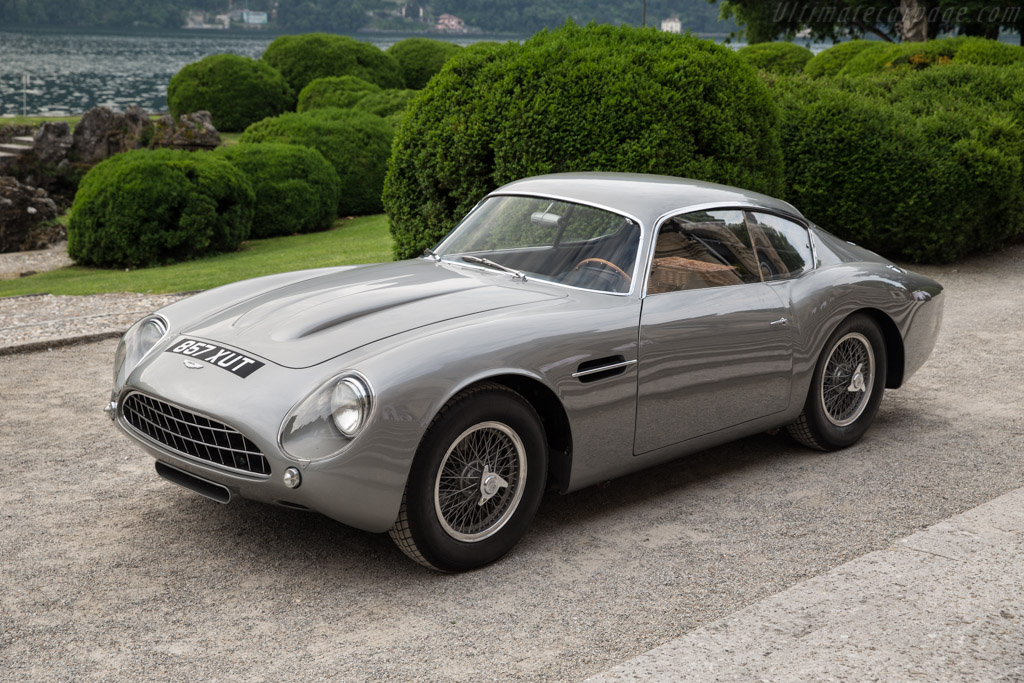 |
| © Wouter Melissen |
If the 250 GTO represented the final statement from Ferrari in beauty and performance for its time, the DB4GT Zagato stood for the same from its arch rival. It is the definitive road-and-track Aston Martin of the company’s golden era, and thus acquisition of one of the 19 DB4GT Zagatos is the ultimate achievement for an Aston Martin enthusiast. As a result, DB4GT/0190/L represents the crown jewel of Paul Andrews’ distinguished collection.
In the Andrews ownership the car has been uprated, with new 16-inch painted wire wheels and tires, and considerable time spent dialing it in to run and drive at its very best, in the fashion typical for this collection. The Archer report indicates that at some point the front anti-roll bar was uprated in diameter, to improve handling, and additional dampers fitted within the rear coil springs—a well-executed modification for a DB4GT Zagato that was set up to be used and enjoyed. The Andrews collection has changed the interior back to the original DB4GT-style seats, upholstered in correct leather acquired from England at considerable cost. A full tool kit accompanies the car, along with a rally kit, the original 15-inch chrome wire wheels, the Zagato-style seats, invoices from the Andrews ownership, and the aforementioned Archer report.
The offering of chassis number DB4GT/0190/L today marks the opportunity for a new owner to do as Paul Andrews did: acquire the pinnacle of its marque, a car for whom no excuses need be made, that represents the most significant dual-purpose Aston Martin of its generation and, simply, one of the greatest performance automobiles ever made.
2. 1959 Ferrari 250 California LWB Competizione Spider
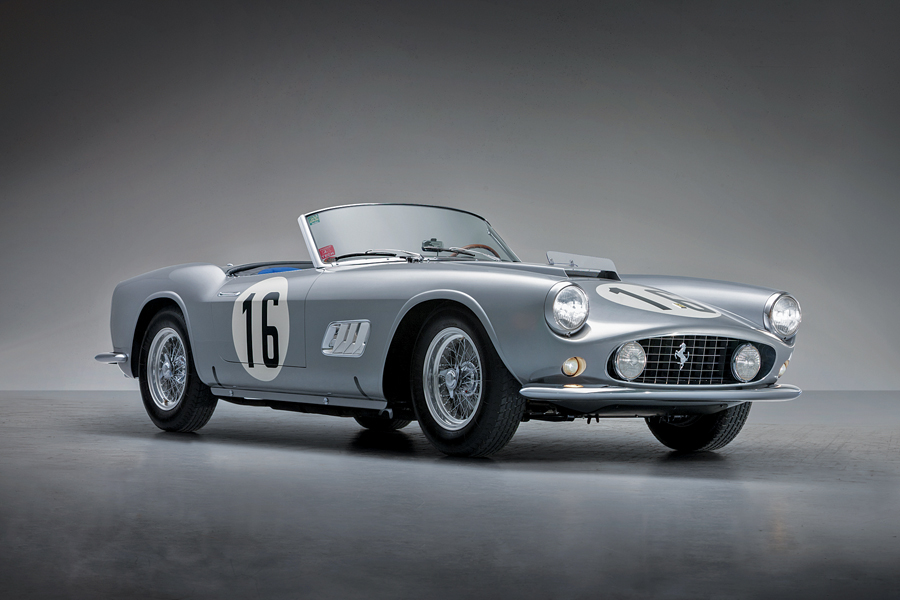 |
| Cymon Taylor ©2017, courtesy of RM Sotheby’s |
Within the hierarchy of the LWB California Spiders, chassis number 1451 GT sits at the very top of the pyramid. Built to full “competizione” specifications, it was the second of eight California Spiders bodied in aluminum and bore the first outside-plug, Tipo 128F engine, topped with high lift camshafts, triple 40 DCL6 carburetors, and a competition-spec fuel tank with an external fuel filter. Horsepower was quoted at an exceptional 262.5 bhp at 7,300 rpm. For Le Mans, its pilot and owner would be Bob Grossman, a successful sports car dealer based in Nyack, a village in Rockland County, New York.
After attending the historic races at Moroso during the Cavallino Classic in 2010, the owner decided that it was time for another full restoration. This time, the car would be returned to its proper Le Mans livery. The Ferrari specialists at Motion Products Inc. were chosen to undertake the restoration, which was completed in 2011, at which time the car promptly returned to the show circuit. Shown for the first time in its proper, period-livery at the Cavallino Classic in 2011, 1451 GT received a platinum award.
Since then, the car has only been shown at a handful of select events. Driven by its current owner on the highly exclusive Le 250 Tornano A Casa tour in France and Italy in 2014, it returned to the United States where it was put on display at the 60 Years of Ferrari in America celebration on Rodeo Drive in Beverley Hills, California. The California Spider returned to Pebble Beach in 2015 where it earned 3rd in Class honors. The next year, it was shown at the Ferrari Club of America Annual Meet in Columbus, Ohio, where it fittingly won the N.A.R.T Award!
1. 1995 McLaren F1 Coupe
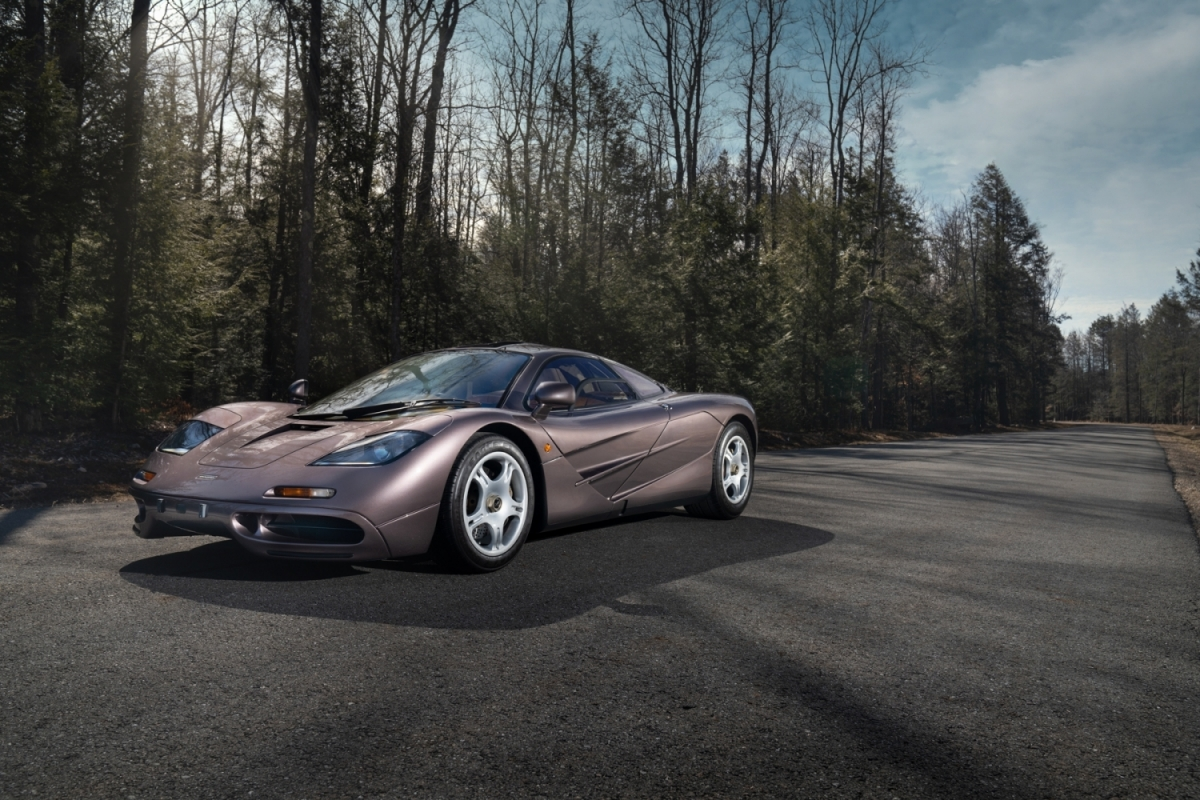 |
| Photo: Gooding & Co. |
The McLaren F1 stands among the greatest sports cars of all time, a revolutionary vehicle that still sets the bar for supercars. The brainchild of Gordon Murray, the renowned designer and technical director of the McLaren Formula One team, the F1 was produced from 1994-1998 by McLaren Automotive, a spin-off of the racing team. With a top-speed of 240.1 miles-per-hour, the F1 became the fastest production car in history, a record it would hold until 2005.
A radical three-seat cockpit and butterfly doors made the F1 look every bit as exotic as its carbon-fiber monocoque body, the first such application in a road car. This wasn’t the only unconventional material employed by Murray, as the F1’s engine compartment was lined with gold foil to insulate the carbon body from potential heat-induced deformation. Powered by a 6.1-liter BMW-sourced V12, the 2,425-pound F1 boasted an astonishing power-to-weight ratio. Its 627 horsepower and 479 lb-ft of torque were routed through a six-speed manual transmission and a Torsen limited-slip differential. The F1’s mid-engine design and short, 107-inch wheelbase helped the double-wishbone aluminum suspension provided exceptional handling.
| RM Sotheby’s flagship auction grossed an astonishing $148,528,300 in total sales this past weekend, over the company’s three-night auction in Monterey, California (12-14 August), with an impressive 90 percent of all lots sold. Following a hiatus in 2020, the preview exhibition and sales at the Monterey Conference Center were well attended, resulting in bidders from 34 countries with 20% representing new clients. The 2021 sale featured a pronounced lineup of cars, including numerous blue-chip automobiles at multi-million-dollar estimates. In total, 44 lots exceeded $1,000,000, 16 lots exceeded $3,000,000 and 4 lots exceeded $5,000,0000 over the course of the three-night sale. The opening night of the three-day auction kicked off with the presentation of The Paul Andrews Estate Collection, a remarkable collection of cars, offered almost entirely without reserve. Led by the stunning 1962 Aston Martin DB4GT Zagato, the collection totalled $34,439,000 with 25 of the 26 lots finding new homes. One of only 19 DB4GT Zagatos built, this particular example was ordered new with numerous unique features specified by the original owner. It is undoubtedly one of the most collectable Aston Martins in existence and achieved $9,520,000 – proving to be the top seller of the night and overall top-selling lot of the sale. |
 Top 6 Audi - Most Expensive Cars of All Time Top 6 Audi - Most Expensive Cars of All Time Audi AG, a well-known German automobile manufacturer for luxury vehicles, has produced a number of most expensive cars in the world. Check the list below ... |
 Top 20 Cars - Most Expensive In The World Of All Time Top 20 Cars - Most Expensive In The World Of All Time When it comes to high-end hypercars, a few specific companies come to mind: Bugatti, Ferrari, Koenigsegg, and Pagani, among others. Below is a list of ... |
 Top 5 BMW - Most Expensive Cars of All Time Top 5 BMW - Most Expensive Cars of All Time Bayerische Motoren Werke AG, commonly referred to as BMW, is a widely-known car brand all over the world. The article given below would provide effective ... |
 Top 10 Mercedes - Most Expensive Cars of All Time Top 10 Mercedes - Most Expensive Cars of All Time Mercedes-Benz is widely considered as a luxury vehicles and commercial vehicles trademark all over the world. Check the article below for Top 10 Most ... |



























